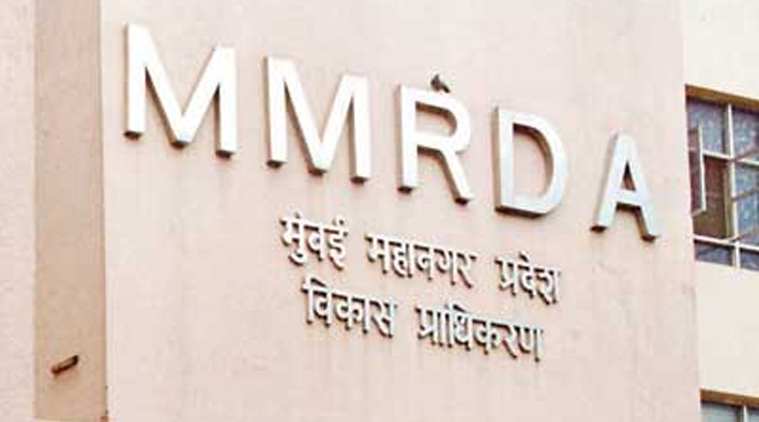Stay updated with the latest - Click here to follow us on Instagram
Affordable housing in Mumbai: MMRDA to redo survey on salt pan lands
Under the new Wetland Rules, 2017, salt pan lands have been exempted and development activities are allowed there, said a senior MMRDA official
 Mumbai Metropolitan Region Development Authority
Mumbai Metropolitan Region Development Authority
The Mumbai Metropolitan Region Development Authority (MMRDA) is reworking a proposal to develop salt pan land in the city after the Union Ministry of Environment and Forests revised the Wetlands (Conservation and Management) Rules to exclude them from the category of wetlands.
The government proposes to use the land for affordable housing projects in the city. MMRDA’s initial survey in 2016 had revealed that barely 25 acres of the 5,379 acres of salt pan land in the city were developable.
“We had prepared a proposal and submitted it to the government based on the Wetlands (Conservation and Management) Rules, 2010. But now the rules have been revised and we are preparing a new proposal based on the Wetland Rules, 2017. Under the new rules, salt pan lands have been exempted and development activities are allowed there,” said a senior MMRDA official.
While the Wetland Rules, 2010, did not make any special exemption for salt pan lands across the country, the 2017 Rules specifically exclude them from the definition of wetlands.
“Wetland” is an area of marsh, fen, peatland or water, whether natural or artificial, permanent or temporary, with water that is static or flowing, fresh, brackish or salt, including areas of marine water — the depth of which at low tide does not exceed six metres, but does not include river channels, paddy fields, human-made water bodies/tanks specifically constructed for drinking water purposes and structures specifically constructed for aquaculture, salt production, recreation and irrigation purposes,” read the Wetland Rules, 2017.
But environmentalists believe that the exclusion of the eco-sensitive area from the Wetland Rules will not really endanger them because they are still protected as Coastal Regulation Zone (CRZ) areas. “There was a lot of ambiguity with regard to CRZ areas in the 2010 rules and the 2017 rules cleared it, saying the CRZ areas are not covered by the Wetland Rules. But they are still protected as CRZ 1 area and MMRDA is wasting time and public money by redoing the survey. Development is still not allowed on these lands,” said Debi Goenka, an environmentalist.
Some have even raised concerns that the government may attempt to dilute the CRZ rules to exempt salt pan lands. “The salt pan lands today are safe and protected by the CRZ rules and even by a Supreme Court order to conserve them. But the government is trying to dilute them as well. Their intention is to open up all the salt pan land in the city,” said Stalin D, Director, NGO Vanashakti.
The MMRDA was tasked by the government to prepare a master plan for the use of salt pan land in Mumbai for affordable housing. But the MMRDA’s initial report in 2016 revealed that barely 25 acres of the 5,379 acres of salt pan land in the city were developable.
“We found that there was too little salt pan area in the city that could be developed as it was protected by the Wetland Rules and the CRZ. Moreover, several tracts of land remain under litigation and it will take us years to clear them. The area we found is also not contiguous and cannot be used,” said a senior MMRDA official.
The new report can be prepared only after the state government notifies the wetlands in the state as directed by the 2017 Rules, as these areas will have to be excluded from the master plan that the MMRDA is expected to submit to the state government.
“The earlier report was made using the wetland atlas with satellite imagery from the Space Application Centre (SAC), Ahmedabad. But with the new Wetland Rules, the states have to notify wetlands in their state. We can prepare the report only after that is done. For the report, we also rely on maps prepared by the Collector and the Municipal Corporation of Greater Mumbai (MCGM) to get details about land titles and ownership. Though we cannot rely on the maps provided by the salt department as they are over a century old, they provide us information about the litigation on their land. The data about the CRZ is provided by the Maharashtra Coastal Zone Management Authority (MCZMA), and all the data is superimposed on the city’s Development Plan map. Last time, we took at least six months to prepare the report,” said another senior official.
The salt pan lands in the city are eco-sensitive areas and play a very important role as flood plains. “During the 2005 floods, the eastern suburbs were relatively less affected compared to the western suburbs, and that is due to the presence of these lands and the mangroves that absorb the floodwaters. Also, they are intertidal zones and in many of the abandoned salt pan lands, we can see mangroves tend to grow back. They also provide an important habitat for marine species and birds. The government in the DP proposes to increase the amount of open spaces in the city. This proposal does the contrary,” added Goenka.
Dilip Kawathkar, spokesperson, MMRDA said, “We had earlier conducted a survey but following the new Wetland Rules, most of the areas should be available for development. We were earlier deducting the wetlands assuming that no construction can be done, but now that there is some clarification that says restriction does not apply, we will be surveying the entire area again. Many of the areas are encroached or under litigation, so the survey will examine how much of the area is buildable. The survey has started and should take at least two to three months.”







